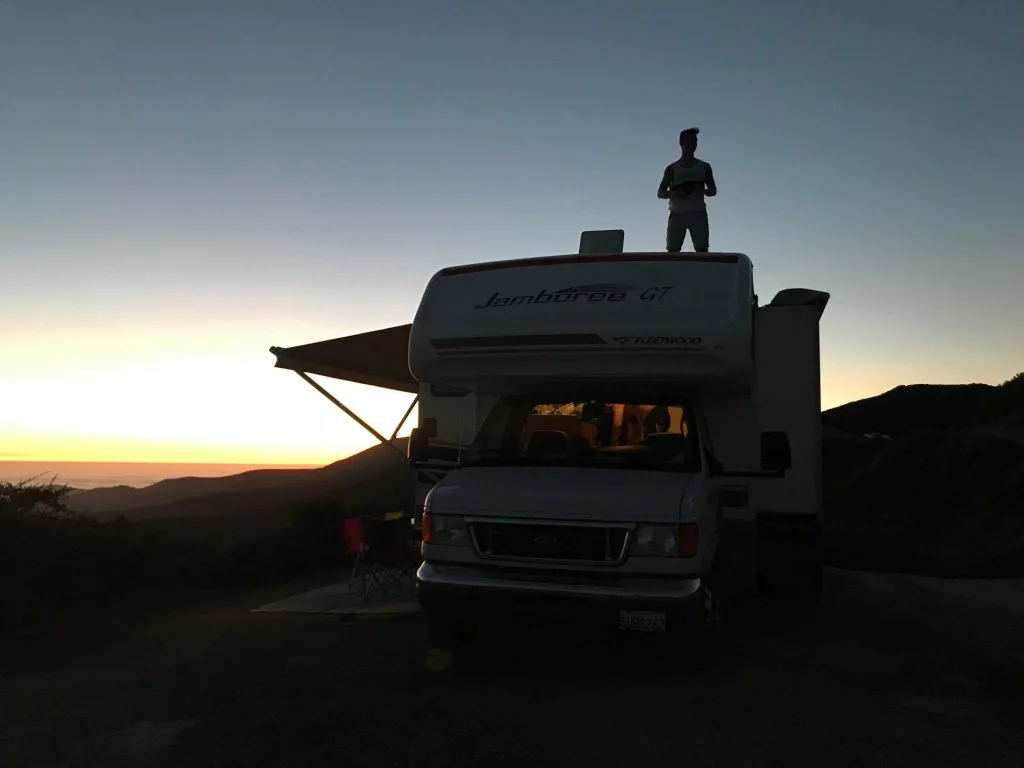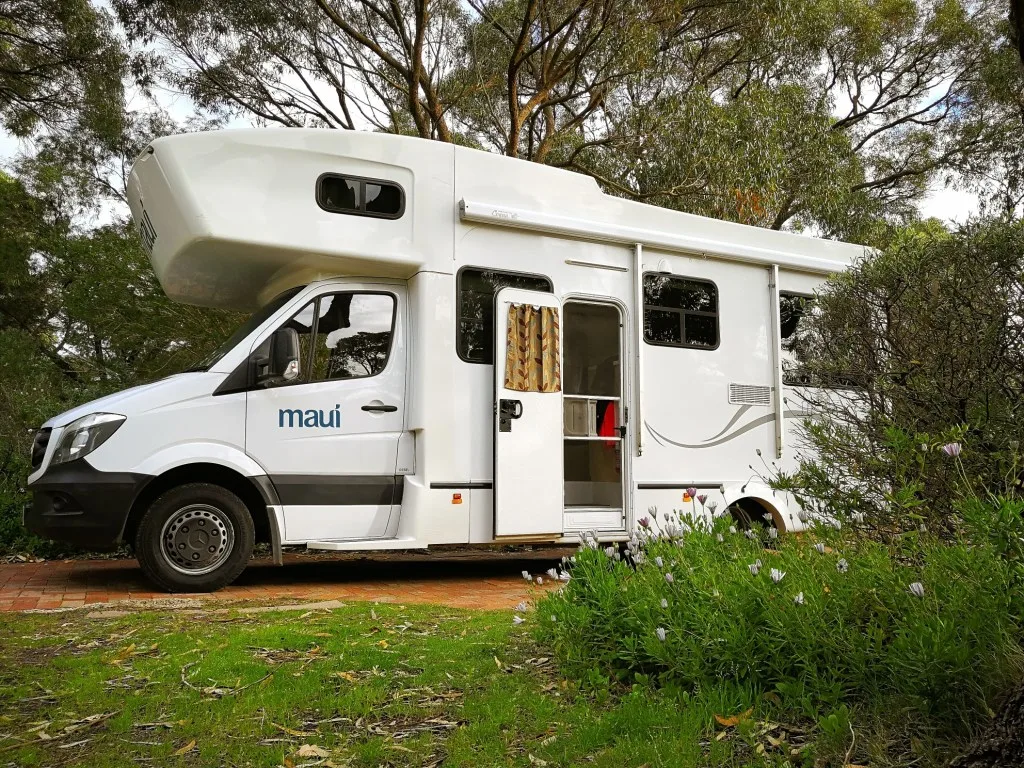How Often Do You Clean and Condition Your RV Roof?
Your RV roof may be out of sight, but it shouldn’t be out of mind.
Keeping your RV roof clean is essential for the longevity of your RV. You also need to be mindful of your maintenance schedule to avoid developing an issue with your RV’s roof.
Luckily, we’ve got a few things we want to share with you about cleaning and conditioning your RV roof.
Let’s get started!
How Often Do You Clean Your RV Roof?
It’ll vary depending on how you use and store your RV. If you’re traveling full-time, you should clean your RV roof quarterly. This helps keep your roof looking clean but also gives you the chance to inspect the sealant.
If you’re part-time or using your RV for weekend adventures, you can likely get by with cleaning your roof at the beginning and end of each camping season.
This is especially true if you keep your RV in covered storage when not in use.
Make sure to use soft brushes on your roof and only use chemicals approved by your manufacturer. Many RVers have had tremendous luck by using a soft-bristle brush and an approved RV roof cleaning product.

How to Clean Your Roof
To clean your roof, you need to access it. Spray the area down before cleaning it or adding any cleaning chemicals. Spray the area with the cleaning solution and use a soft-bristle brush in a circular motion to scrub a section of the roof.
Many people start at the front of the RV and work their way backward.
You should always make sure you watch where you’re stepping when cleaning your roof. The last thing you want is to trip over a vent pipe or skylight and fall off your RV or put a hole in your roof.
If you do, cleaning your roof will be the least of your worries.
How Often Do You Condition Your RV Roof?
You should condition your RV roof after each cleaning. So if you’re using your RV for full-time traveling, you may find yourself conditioning your RV every few months.
However, if you’re a seasonal or part-time camper, then you’ll likely be able to get by with applying at the beginning and end of each camping season.
Once you’ve washed the roof, you can spray a conditioner or treatment a couple of times a year.
By staying up to date on your maintenance, you can add years of life to your RV roof and help avoid leaks and other failures.

How to Condition Your Roof
Wait for your roof to dry after washing it. Then wait for the sun to start setting or move your RV into a shady location. Spray the conditioner onto your RV roof and use a rag or sponge to apply the conditioner evenly.
This is another excellent way to keep your roof in tip-top shape.
Pro Tip: If your RV roof needs some maintenance, try out these 5 Simple RV Roof Repair Hacks.
Types of RV Roofs
There are two major types of rubber RV roofs — TPO and EPDM. TPO is short for thermoplastic polyolefin, and EPDM is short for ethylene propylene diene monomer.
When comparing the two roof layers, EPDM is thicker, and TPO is typically lighter. Both roofing types are high-quality and often come with manufacturer warranties that are 10 years or longer.
EPDM has been on the scene longer, and the RV industry uses it a lot.
However, TPO is putting up a fight as more and more manufacturers are making the switch. TPO roofs reflect sunlight, allowing RVs to stay cooler during the warmer months. Peak camping seasons are during the warmer months, so it’s not surprising that manufacturers are switching.
TPO roofs are less resistant to flexing. This means they can develop cracks.
However, as we previously mentioned, RV roofs typically come with long warranties, so if you properly maintain your roof, you’ll likely have nothing to worry about
Tips for RV Roof Maintenance
We have a few tips for you in terms of doing RV roof maintenance. Let’s take a look!
Check Every Three Months and After Storms or Run-Ins with Limbs
You should know whether your RV’s roof is walkable or not.
If it is, you should be regularly climbing up to inspect it. The more you can get up and take a look around your roof, the more likely you are to catch any issues before they grow into significant problems.
You may not realize you passed under a low-hanging limb or that a storm knocked a branch onto your RV.
Even if your RV spends more time in storage than in a campsite, you should be inspecting your roof at least every three months to look for potential issues.

Check Every Seam and Seal
Pay attention to every seam and seal on your RV roof. Address any seam or seal that shows signs of aging or damage as soon as possible. Even the smallest of damaged seams and seals can cause massive damage.
Your RV’s roof warranty may even be dependent on maintaining the seams and seals. You may discover that you’re responsible for the entire repair bill because you failed to properly maintain the seams and seals.
Pro Tip: Need to touch up your seams and seals after washing your roof? This is Which RV Roof Sealant Should You Use?
Keep RV Roof Sealant on Hand for Emergency Repairs
It’s always a good idea to keep roof sealant on hand. You never know when you’ll need to climb up on your roof to do an emergency repair. You don’t want to be unprepared if you hit a low-hanging limb or something tears your roof material.
Don’t wait days or weeks to get the proper materials to fix a roof issue.
Cover any rips or tears in your roof as soon as possible to avoid the issue getting worse.
Regularly Cleaning and Conditioning Your RV Roof Saves You Money
By following your RV manufacturer’s recommended cleaning and conditioning schedule, you’ll extend the life of your RV roof and avoid costly repair bills. The more money you save, the more money you have for adventures.
So don’t forget to stay up to date on maintaining your RV and regularly inspect your roof for damage.
When was the last time you cleaned and conditioned your RV roof?
Discover the Best Free Camping Across the USA
To be honest with you, we hate paying for camping. There are so many free campsites in America (with complete privacy).
You should give it a try!
As a matter of fact, these free campsites are yours. Every time you pay federal taxes, you’re contributing to these lands.
Become a FREE CAMPING INSIDER and join the 100,000 campers who love to score the best site!
We’ll send you the 50 Best Free Campsites in the USA (one per state). Access the list by submitting your email below: